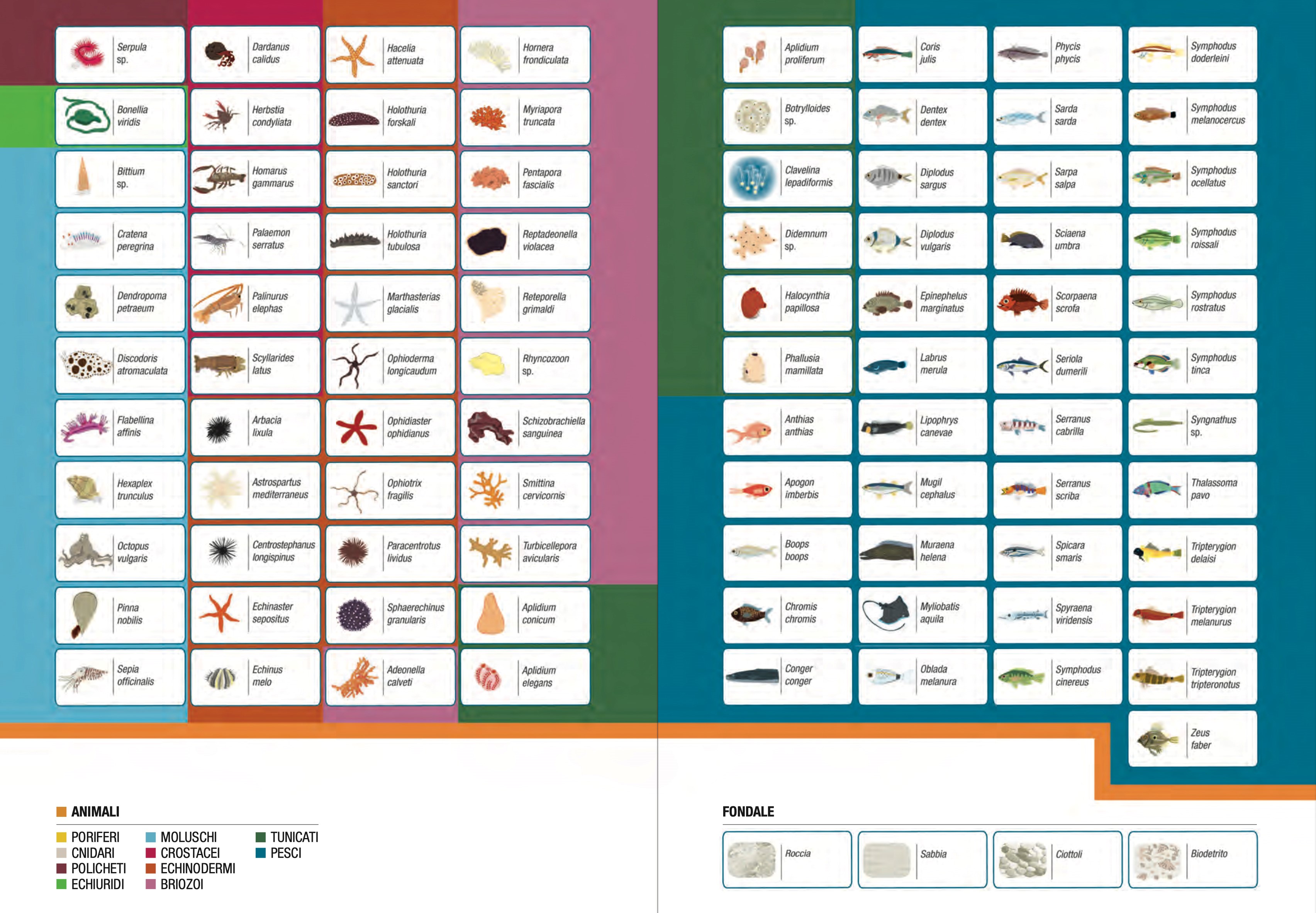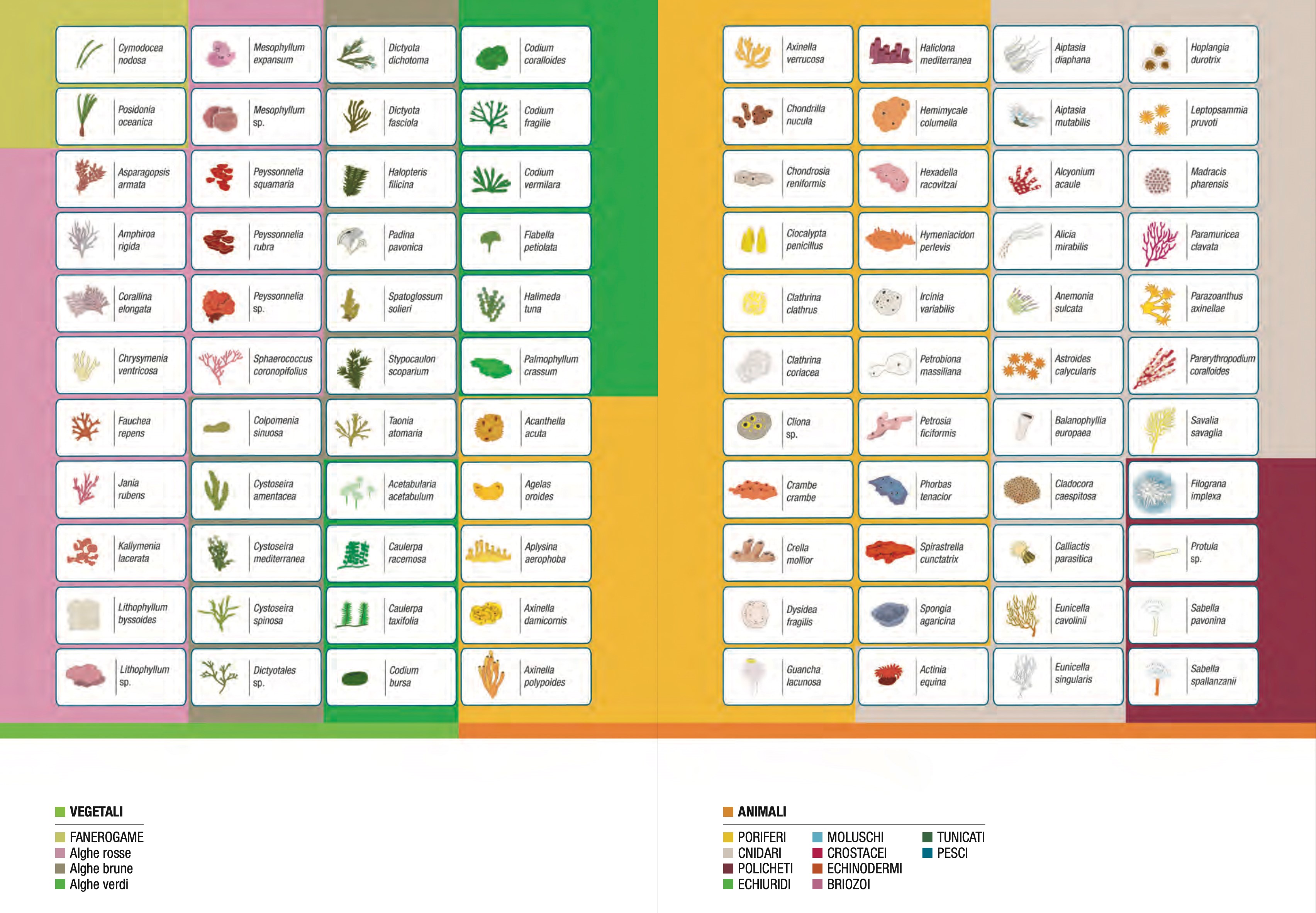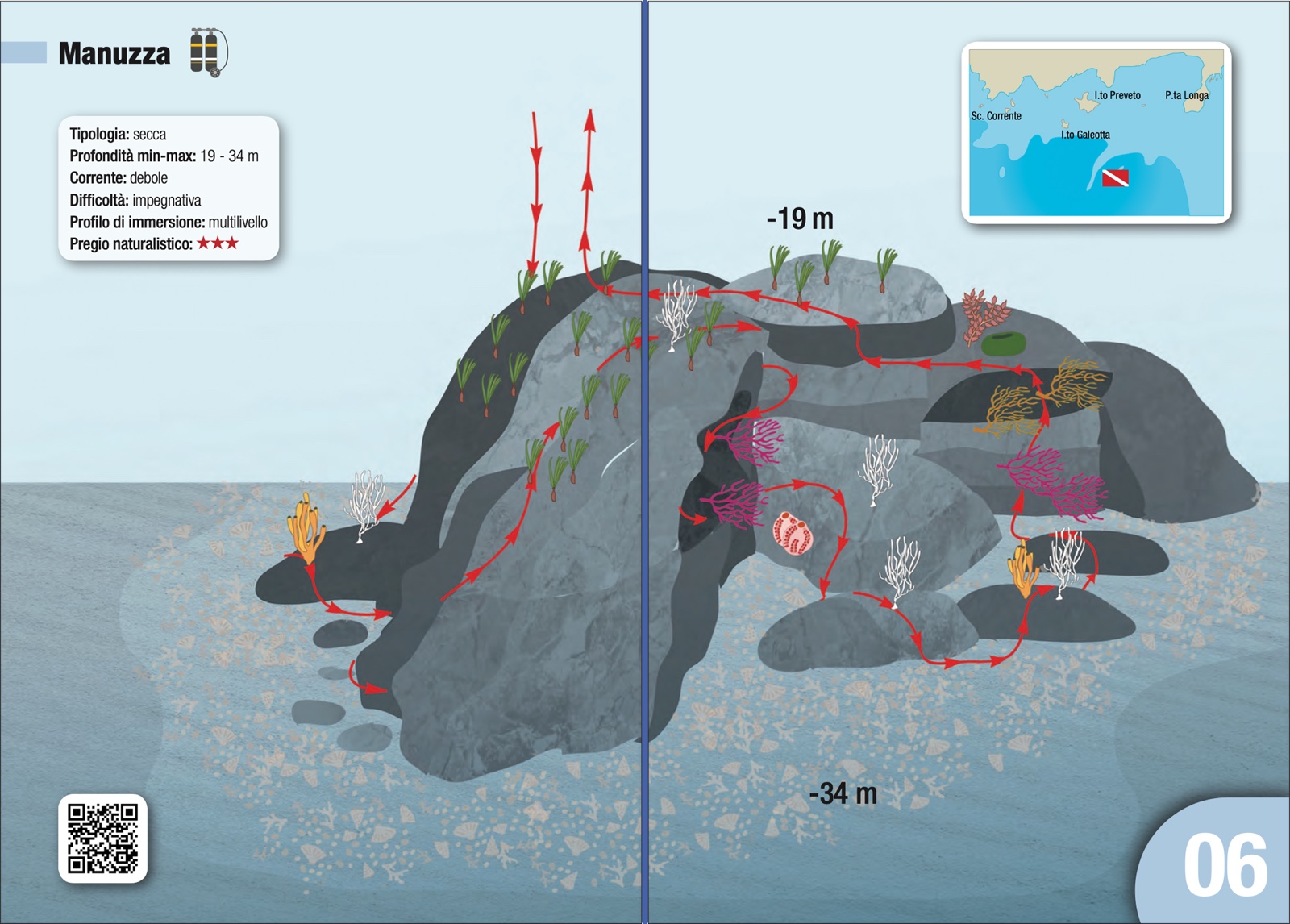Site 6 - Manuzza
The morphology of the shoal, which when viewed from the top resembles the knuckles of a clenched fist, gives the dive site its name. It is one of the so-called 'Pali' that characterise the seabed to the south of the island of Favignana, recognisable between 19 and 50 m depth. The top of this rocky relief, at a depth of 19 m, presents an alternation of algal stands (Dictyotales spp., Taonia atomaria, Asparagopsis armata, Sphaerocuccus coronopifolius) and Posidonia oceanica grassland. In the vegetation substrate, one notices the spirograph Sabella pavonina, the colourful tunicates Aplidium conicum and A. elegans, a few urchins (Arbacia lixula) and, among the fish, the great seabream (Diplodus sargus), the ocellated wrasse (Symphodus ocellatus) and the banded wrasse (S. doderleini). Travelling along the north side along the vertical wall, large, dense colonies of the yellow (Eunicella cavolinii ) and white (Eunicella singularis) gorgonian are replaced deeper down by the red gorgonian (Paramurcea clavata). Crevices and ravines provide substrate for a colourful floral-faunal ensemble, with the yellow of the madrepores Leptopsammia pruvoti and the massive sponges Agelas oroides and Axinella verrucosa, the orange of the sponges Spirastrella cunctatrix, Hexadella racovitzai and the bryozoan Hornera frondiculata, the red of the false coral Myriapora truncata, the green of the algae Flabellia petiolata and Halimeda tuna and the black of the urchin Centrostephanus longispinus. The brown grouper (Epinephelus marginatus) and the lobster (Palinurus elephas) find refuge in the crevices, while mullet kings (Apogon imberbis) and red damselfish (Anthias anthias) swim among the gorgonian branches. On the biodetritic bottom, at 34 m, there are boulders concreted by red algae (Peyssonnelia sp.) on which white gorgonia, the candelabrum sponge (Axinella polypoides) and green tufts of Caulerpa taxifolia grow.
Legenda:


-
Information
-
Contacts
